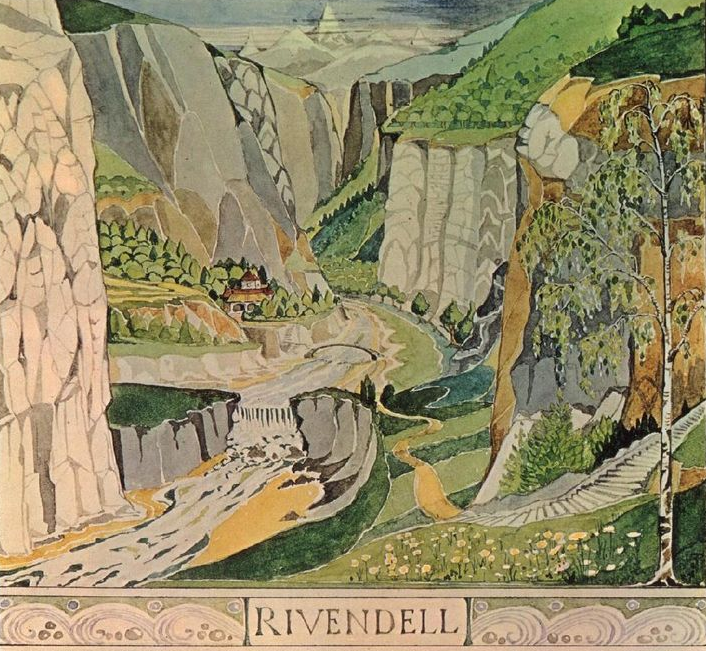Ten Monster Setting
“I should have been a pair of ragged claws
Scuttling across the floors of silent seas.”
- T.S. Elliot, The Lovesong of J Alfred Prufrock, 1920
Nate Marcel, Gullman, 2019
I recently ran across Three Toadstools Publishing’s idea of creating a mini-setting using only ten monsters & wanted to participate. I worked on a post off and on for my Lands of Khos setting & ultimately abandoned the project. I told myself it was because I didn’t want to spoil any of the pleasures to be found by players exploring the world for themselves, but that’s not quite true. There was useful failure in my effort because I learned a couple things. First, my setting isn’t quite as thematically focused as I might like (there are easily a couple dozen monsters I currently consider “core” to my campaign). Second, to the degree that it is focused, it is heavily centered on fey monsters which was not a great fit for this exercise.
Here then, is my #tenmonstersetting. It may yet be found in my campaign world, but it might be at some remove from where the players take up their initial adventures. I’m picturing a coastline where something like Greyhawk’s U-series might be found. I note it has some similarities to the original post, but that is coincidental; I’ve run a few nautical games & tend to return to that motif.
Semi-intelligent humanoid
Diggers (Crab-men)
Years before Krogas “The Drowned City” succumbed to “The Final Tide”, Diggers were servitors created by the Yanaidar elders as labor for the now haunted and desolate metropolis. Those diggers that remain have become forgetful archaeologists and archivists of a sort. They know the city and its subterranean tunnels. There are multiple factions & what they consider valuable varies by clan.
Undead
Drowners (Ghouls)
When Krogas was destroyed by a wall of water, most simply perished. Cultists of Yanaidar, however, passed into undeath, the waters the unholy baptismal their devotions had prepared them for. These ghouls do not paralyze as easily (+4 to saves), however they are often lead by a divine spell-caster & victims collapse before paralysis. This is a particular danger in a city still deluged by water.
Ancient Fey
Cove-maidens (Nereids)
Forty, led by Lieutenant Halia. This platoon of fey warriors was pledged to the harbormaster before the deluge and have seven years left to their oath. The city is gone and the mariner likely dead, but their service remains. Squads of seven patrol the city looking for the “The Master.” They might be bargained with, but are as likely to press-gang adventurers to their service. They hold five giant otters among their assets.
Giant/Ogre/Troll
The Scrag Brothers (Marine Trolls)
Malik & Ugo. Finding crab-men delicious, “The Scrag Brothers” live in a saltwater lake in the city’s interior near one of the smaller digger enclaves. The two usually try to extract some kind of toll from interlopers into their “feeding grounds". Both are cowardly bullies who, after little injury, will run for regenerative waters & will be open to negotiation thereafter. Expert trappers, their devices are everywhere.
Great Wyrm/Lizard
Brackrym (Brine Dragon)
This young adult dragon came soon after the ruin of Krogas. They want badly to rule over a people and are not content with any of the factions’ levels of flattery nor tribute. Brackrym’s disposition and alignment vary widely with the tides - reasonable at high tide, much less so when the waters ebb. It’s not true, but they’ve lately taken to calling themselves “The Harbormaster” in a misguided hope of fooling the Cove-maidens.
Nate Marcel, Gullman 2, 2019
Aerial
Gull-men (Aarakocra)
The few dozen remaining in The Drowned City make their home in the rooftops of the former temple district. Along with the javelins they make from coastal spinegrass, they’ve scavenged the weapons of the temple guards & set up a peculiar masonic order led by Firstgull Jothan. They despise the Drowners and Vodyanoi, but are also very territorial with respect to the temples. Most of the other factions consider them self-righteous braggarts.
Water
Vodyanoi (Koa-toa)
It was Vodyanoi priests, in an unholy alliance with the Yanaidar cultists, that brought the wall of water to Krogas. The Vodyanoi raided the human settlements of this coastline for generations. Now, by drowning most of the city’s inhabitants, they have ensured access to ancestral vaults in the catacombs beneath. And their sleeping aboleth god. They no longer have use for the Drowners, their former allies.
Outsider
Sprays (Mephit)
Sprays are the saltwater imps which were bound as apprentices and errand-runners for the Yanaidar cultists. Now that their former masters are technically dead, their contracts are broken & there are several of them running around the city and its catacombs, each with their own agenda and each getting up to all kinds of mischief. They seem to be unable to return to their abyssal planes.
Classic Mythos
Hephaestus (Titan)
The Vodyanoi and Yanaidar cultists believe they summoned a wall of water to destroy Krogas. In truth, they merely prophesied Zeus casting the meteoric infant Hephaestus into the ocean. The nereids Thetis & Eurynome magically shrunk him down, bore him through underwater tunnels, and raised him away from Zeus’s wrath, in the catacombs below Krogas. A teenager now, Hephaestus carves out massive underworld forges and plans his eventual escape to a wider world.
Underworld
Dredge (Derro)
Over time, Hephaestus made dwarven helpers from the anthracite near his hearth. These forge apprentices tunneled towards the surface when they were not assisting Hephaestus. Many of these have been captured by Yanaidar cultists and transformed to hateful analogs called the Dredge. The Dredge share their brothers’ fondness for precious gems but have added forbidden lore to their desires.












